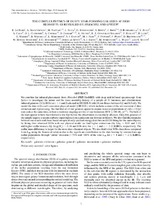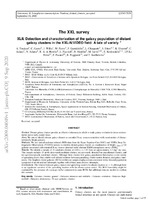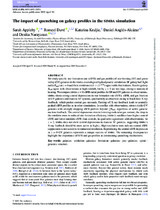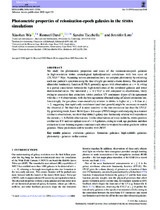| dc.contributor.author | Lo Faro, Barbara | |
| dc.contributor.author | Franceschini, Alberto | |
| dc.contributor.author | Vaccari, M. | |
| dc.contributor.author | Silva, L. | |
| dc.contributor.author | Rodighiero, G. | |
| dc.contributor.author | Berta, S. | |
| dc.contributor.author | Bock, J. | |
| dc.contributor.author | Burgarella, D. | |
| dc.contributor.author | Buat, V. | |
| dc.contributor.author | Cava, A. | |
| dc.contributor.author | Clements, D.L. | |
| dc.contributor.author | Cooray, Asantha | |
| dc.contributor.author | Farrah, D. | |
| dc.contributor.author | Feltre, Anna | |
| dc.contributor.author | Gonzalez-Solares, Eduardo A. | |
| dc.contributor.author | Hurley, P. | |
| dc.contributor.author | Lutz, D. | |
| dc.contributor.author | Magdis, G. | |
| dc.contributor.author | Magnelli, B. | |
| dc.contributor.author | Marchetti, L. | |
| dc.contributor.author | Oliver, S.J. | |
| dc.contributor.author | Page, Matthew J. | |
| dc.contributor.author | Popesso, P. | |
| dc.contributor.author | Pozzi, F. | |
| dc.contributor.author | Rigopoulou, D. | |
| dc.contributor.author | Rowan-Robinson, M. | |
| dc.contributor.author | Roseboom, I.G. | |
| dc.contributor.author | Scott, Douglas | |
| dc.contributor.author | Smith, A.J. | |
| dc.contributor.author | Symeonidis, Myrto | |
| dc.contributor.author | Wang, L. | |
| dc.contributor.author | Wuyts, S. | |
| dc.date.accessioned | 2017-07-24T09:20:26Z | |
| dc.date.available | 2017-07-24T09:20:26Z | |
| dc.date.issued | 2013 | |
| dc.identifier.citation | Lo Faro, B. et al. (2013). The complex physics of dusty star-forming galaxies at high redshifts as revealed by Herschel and Spitzer. The Astrophysical Journal , 762 (108): 1-13 | en_US |
| dc.identifier.issn | 0004-637x | |
| dc.identifier.uri | http://hdl.handle.net/10566/3099 | |
| dc.description.abstract | We combine far-infrared photometry from Herschel (PEP/HerMES) with deep mid-infrared spectroscopy from
Spitzer to investigate the nature and the mass assembly history of a sample of 31 luminous and ultraluminous
infrared galaxies ((U)LIRGs) at z ∼ 1 and 2 selected in GOODS-S with 24μm fluxes between 0.2 and 0.5 mJy.We
model the data with a self-consistent physical model (GRASIL) which includes a state-of-the-art treatment of dust
extinction and reprocessing. We find that all of our galaxies appear to require massive populations of old (>1 Gyr)
stars and, at the same time, to host a moderate ongoing activity of star formation (SFR 100M yr−1). The bulk of
the stars appear to have been formed a few Gyr before the observation in essentially all cases. Only five galaxies of
the sample require a recent starburst superimposed on a quiescent star formation history.We also find discrepancies
between our results and those based on optical-only spectral energy distribution (SED) fitting for the same objects;
by fitting their observed SEDs with our physical model we find higher extinctions (by ΔAV ∼ 0.81 and 1.14)
and higher stellar masses (by Δlog(M ) ∼ 0.16 and 0.36 dex) for z ∼ 1 and z ∼ 2 (U)LIRGs, respectively. The
stellar mass difference is larger for the most dust-obscured objects. We also find lower SFRs than those computed
from LIR using the Kennicutt relation due to the significant contribution to the dust heating by intermediate-age
stellar populations through “cirrus” emission (∼73% and ∼66% of the total LIR for z ∼ 1 and z ∼ 2 (U)LIRGs,
respectively). | en_US |
| dc.language.iso | en | en_US |
| dc.publisher | IOP Publishing | en_US |
| dc.rights | Publisher retains copyright. Authors may archive the published version in their institutional repository. | |
| dc.source.uri | http://dx.doi.org/10.1088/0004-637X/762/2/108 | |
| dc.subject | Galaxies | en_US |
| dc.subject | Evolution – galaxies | en_US |
| dc.subject | General – galaxies | en_US |
| dc.subject | Interactions – galaxies | en_US |
| dc.subject | Starburst | en_US |
| dc.title | The complex physics of dusty star-forming galaxies at high redshifts as revealed by Herschel and Spitzer | en_US |
| dc.type | Article | en_US |
| dc.description.accreditation | Department of HE and Training approved list | |




